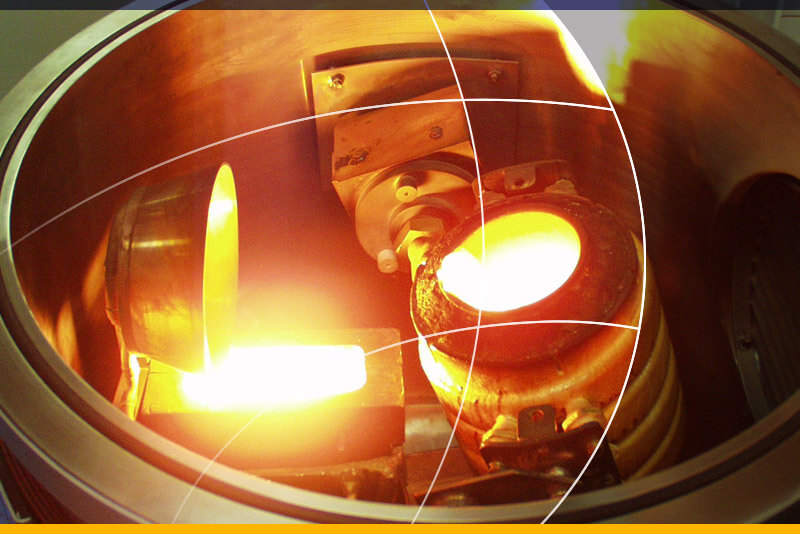- PVA Industrial Vacuum Systems GmbH
- Technologies
- Melting Metallurgy
Metals and alloys produced through vacuum metallurgy are essential parts of modern life. Precious metals in electronics, chemical and medical technology, high-alloy and fine-alloy materials in the automotive and aerospace industries, and special alloys in the energy sector, as well as industry in general, are just a few examples. Such materials are often manufactured using induction-heated vacuum melting and casting systems, which enable melts to be produced exactly as required, with precisely defined compositions, and casting and solidification to take place under strictly predefined conditions.
Inductive melting of metals or alloys in graphite or ceramic crucibles in vacuum conditions or controlled gas atmospheres makes it possible to manufacture high-purity and special alloys. The absence of air (oxygen, moisture, etc.) means that cleaning processes can be conducted under controlled pressure and temperature conditions by means of unwanted components being evaporated from the melt, and also that special alloy compositions can be formed by the addition of alloying agents. The inductive field of the melting coil uses electromagnetic stirring to ensure a largely homogeneous melt. The tiltable inductive melting equipment in the vacuum chamber enables tilt casting.
For these applications, PVA offers induction-heated vacuum melting systems from the VSG series. These can be employed to make semi-finished products and components from particular metals or alloys for a range of uses.
Typical applications for our vacuum melting systems:
- Material development in steelworks, research and teaching institutes, and foundries
- Processing precious metals in the dental, electronics, and watchmaking, and jewelry industries
- Manufacturing shape-memory alloys for the electronics and automotive industries
- Precision casting and investment casting in the metal-processing industry
When it is necessary to configure specific properties for a cast structure, such as influencing the speed and direction of solidification, avoiding the formation of gas cavities or splitting a melt into multiple cast parts, melts created via vacuum metallurgy are cast in a process chamber under controlled pressure and temperature conditions. It is useful for casting to take place after the vacuum melting process using the tilt casting method, from the crucible into forms or molds.
PVA offers induction-heated casting systems from the VSG series for these applications.
Typical processes include:
- Ingot and mold casting
- Ingot casting with water-cooled dies
- Mold casting with heated molds or forms
- Directional solidification according to the Bridgman method
- Monocrystalline vertical gradient freeze processes; for instance, for turbine blades
